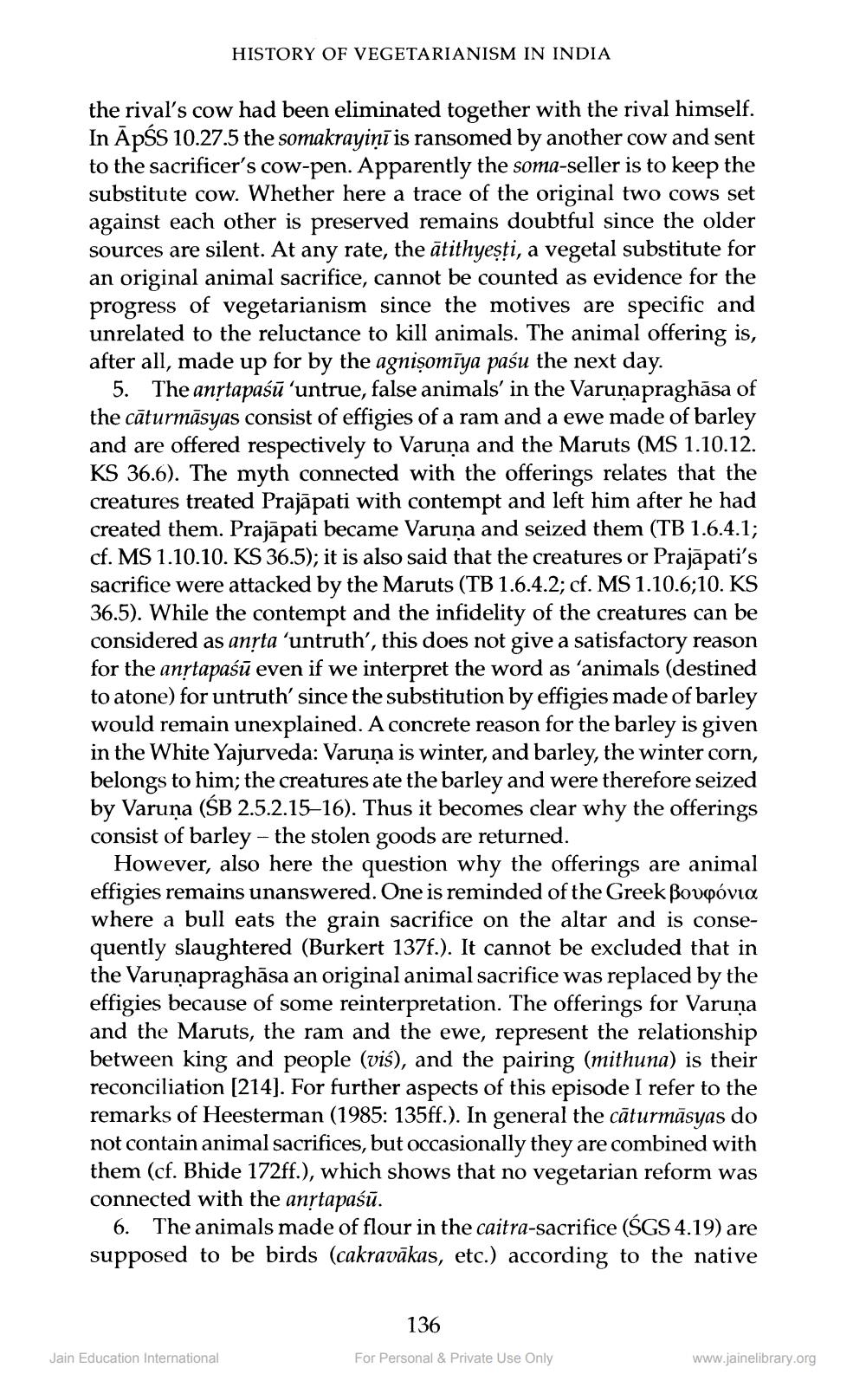________________
HISTORY OF VEGETARIANISM IN INDIA
the rival's cow had been eliminated together with the rival himself. In ĀPŠS 10.27.5 the somakrayiņī is ransomed by another cow and sent to the sacrificer's cow-pen. Apparently the soma-seller is to keep the substitute cow. Whether here a trace of the original two cows set against each other is preserved remains doubtful since the older sources are silent. At any rate, the ātithyesti, a vegetal substitute for an original animal sacrifice, cannot be counted as evidence for the progress of vegetarianism since the motives are specific and unrelated to the reluctance to kill animals. The animal offering is, after all, made up for by the agnișomīya paśu the next day.
5. The anztapasū untrue, false animals in the Varuņapraghāsa of the cāturmāsyas consist of effigies of a ram and a ewe made of barley and are offered respectively to Varuna and the Maruts (MS 1.10.12. KS 36.6). The myth connected with the offerings relates that the creatures treated Prajāpati with contempt and left him after he had created them. Prajāpati became Varuņa and seized them (TB 1.6.4.1; cf. MS 1.10.10. KS 36.5); it is also said that the creatures or Prajāpati's sacrifice were attacked by the Maruts (TB 1.6.4.2; cf. MS 1.10.6;10. KS 36.5). While the contempt and the infidelity of the creatures can be considered as ansta 'untruth', this does not give a satisfactory reason for the anstapaśū even if we interpret the word as animals (destined to atone) for untruth' since the substitution by effigies made of barley would remain unexplained. A concrete reason for the barley is given in the White Yajurveda: Varuņa is winter, and barley, the winter corn, belongs to him; the creatures ate the barley and were therefore seized by Varuņa (ŚB 2.5.2.15–16). Thus it becomes clear why the offerings consist of barley - the stolen goods are returned.
However, also here the question why the offerings are animal effigies remains unanswered. One is reminded of the Greek Bovcovia where a bull eats the grain sacrifice on the altar and is consequently slaughtered (Burkert 137f.). It cannot be excluded that in the Varunapraghāsa an original animal sacrifice was replaced by the effigies because of some reinterpretation. The offerings for Varuņa and the Maruts, the ram and the ewe, represent the relationship between king and people (vis), and the pairing (mithuna) is their reconciliation [214]. For further aspects of this episode I refer to the remarks of Heesterman (1985: 135ff.). In general the cāturmāsyas do not contain animal sacrifices, but occasionally they are combined with them (cf. Bhide 172ff.), which shows that no vegetarian reform was connected with the anstapaśū.
6. The animals made of flour in the caitra-sacrifice (ŚGS 4.19) are supposed to be birds (cakravākas, etc.) according to the native
136
Jain Education International
For Personal & Private Use Only
www.jainelibrary.org




